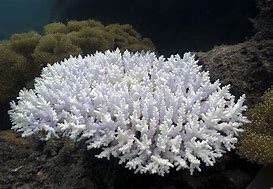How Is Climate Change Affecting The Ocean? Coral Bleaching.
There are many coral reefs around the world known for their exciting wildlife and bright colours. However, global warming has begun to change this. What was once a bright colourful environment is now dull and dying due to a process known as “coral bleaching”.
What is Coral Bleaching?
Coral bleaching happens when corals lose their vibrant colours and turn white. Corals are bright and colourful because of a certain algae. Algae is a simple, non flowering, aquatic type of plant found in water. This algae lives in the coral and helps it to survive. However, when the ocean gets too warm the coral gets stressed and releases the algae. As the algae leaves, the coral fades until it’s fully white. If temperatures stay high, the coral wont let the algae back and the coral will die.
 What Causes Coral Bleaching?
What Causes Coral Bleaching?
The main cause of coral bleaching is climate change. As the planet continues to get warmer, so does the ocean and a rise or change in water temperature can destroy the corals. There are some other less common causes such as low tides, too much sunlight or pollution – which is also connected to climate change.
How Does Coral Bleaching Impact Wildlife?
Many different marine animals depend on coral reefs for survival. Sea turtles, fish, crabs, jellyfish, shrimp and starfish are among the numerous species which will be affected by coral bleaching. These animals rely on coral reefs for shelter, protection from predators and more. The destruction of coral reefs is not only dangerous for oceans but also its wildlife.
What Can You Do to Help?
- Recycle and dispose of rubbish properly.
- Use environmentally friendly modes of transportation – such as public transport or bikes.
- Save Power – turn off your lights and buy energy and buy energy efficient appliances.
Sources: worldwildlife.org



